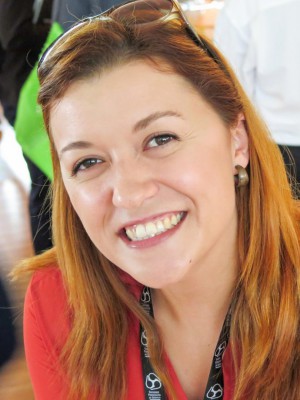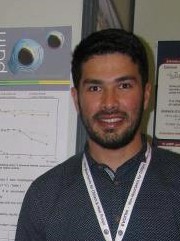resumo
In this work it is shown, for the first time, that aqueous solutions of poly(vinyl alcohol) (PVA) and acetonitrile (ACN) undergo liquid-liquid demixing and form aqueous two-phase systems (ATPS). The ternary phase diagrams composed of PVA of different molecular weights, namely 9000-10,000, 13,000-23,000, 31,000-50,000 g mol(-1) and 85,000-124,000 g mol(-1), acetonitrile and water, and the respective tie-lines were determined at 25 degrees C. In all the systems investigated, ACN is enriched in the top phase while PVA is found in the bottom phase. To explore the potentiality of these ATPS for extraction strategies, the partitioning of vanillin among the coexisting phases was further evaluated. The effects of ACN and PVA concentrations and temperature toward the vanillin partitioning were also investigated. An increased vanillin partitioning to the top phase was verified with the increase of the ACN concentration; however, the partition coefficient of vanillin for the ACN-rich phase decreases with the increase on both the PVA concentration and temperature. The highest partition coefficient of vanillin for the ACN-rich phase (2.24) was found with the system composed of 49 wt% of ACN + 9 wt% of PVA 9000-10,000 g mol(-1) at 5 degrees C, with a recovery of 79%. The vanillin migration to the top phase is spontaneous and an exothermic process. (C) 2014 The Institution of Chemical Engineers. Published by Elsevier B.V. All rights reserved.
palavras-chave
LIQUID-LIQUID-EXTRACTION; BIPHASIC SYSTEMS; POLYETHYLENE-GLYCOL; IONIC LIQUIDS; SEPARATION; PHOSPHATE; RECOVERY; PURIFICATION; BIOMOLECULES; MOLECULES
categoria
Engineering
autores
Cardoso, GD; Souza, IN; Pereira, MM; Costa, LP; Freire, MG; Soares, CMF; Lima, AS
nossos autores
Projectos
Ionic Liquids as Promoters of Aqueous Biphasic Systems: The Role of van der Waals and Coulomb Interactions (PTDC/QUI-QUI/121520/2010)
Centre for Research in Ceramics and Composite Materials - CICECO (LA0011: 2013-2014) (PEst-C/CTM/LA0011/2013)
agradecimentos
The authors are thankful to Fundacao de Amparo a Pesquisa e Inovacao Tecnologica do Estado de Sergipe - FAPITEC/SE for the financial support and scholarship of G.B. Cardoso, and CNPq for the scholarship of I.N. Souza. The authors thank Fundacao para a Ciencia e a Tecnologia (FCT) for the projects PTDC/QUI-QUI/121520/2010 and Pest-C/CTM/LA0011/2013. The authors also acknowledge the financial support from Coordenacao de Aperfeicoamento de Pessoal de Nivel Superior - Capes for the PhD grant (2740-13-3) of M.M. Pereira.



